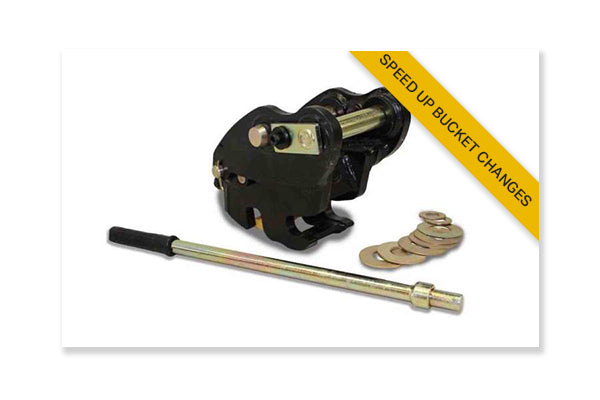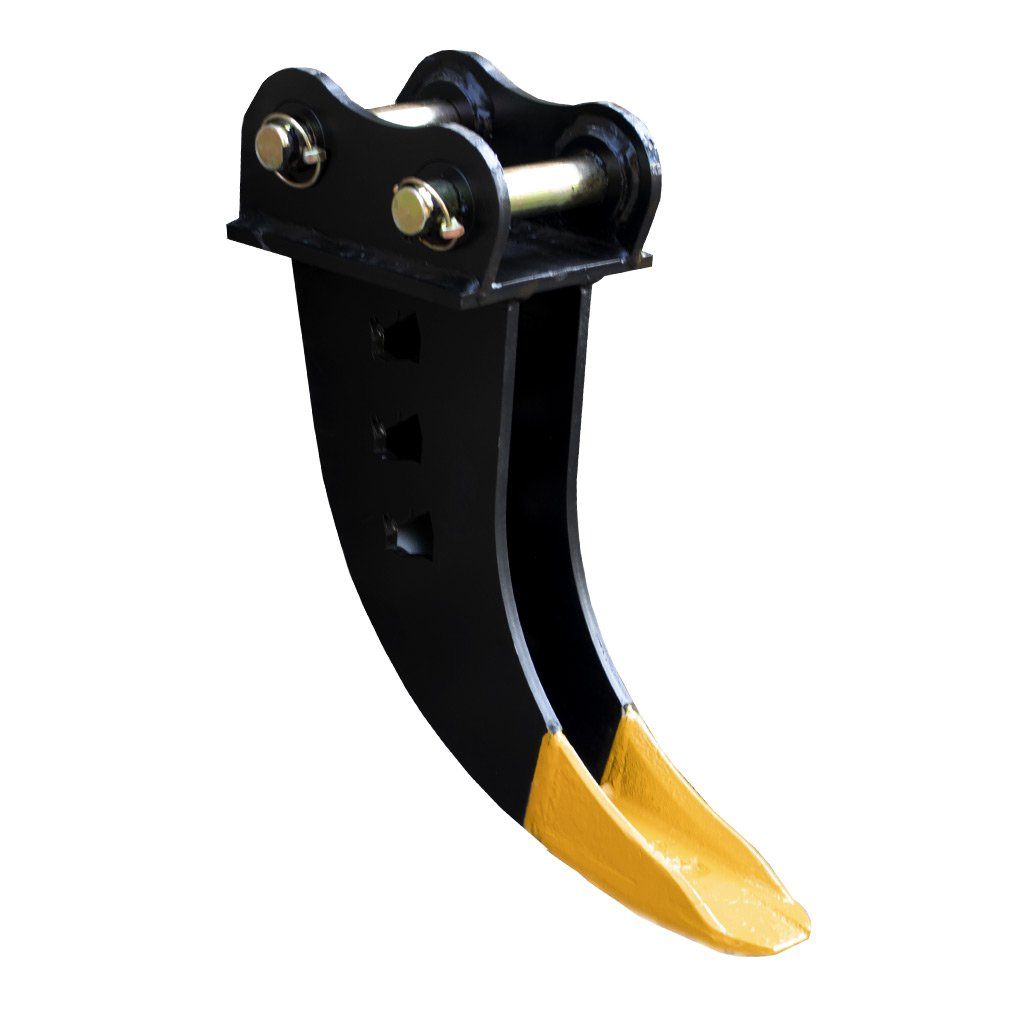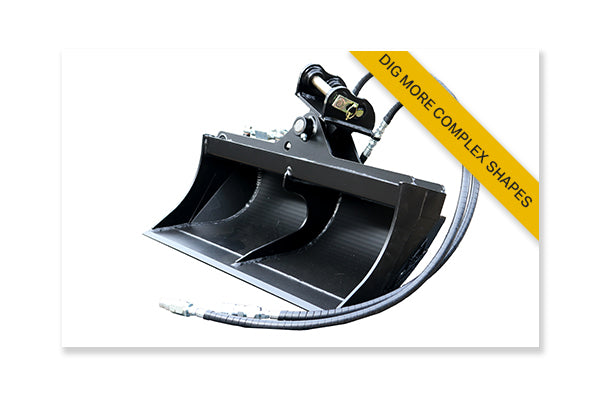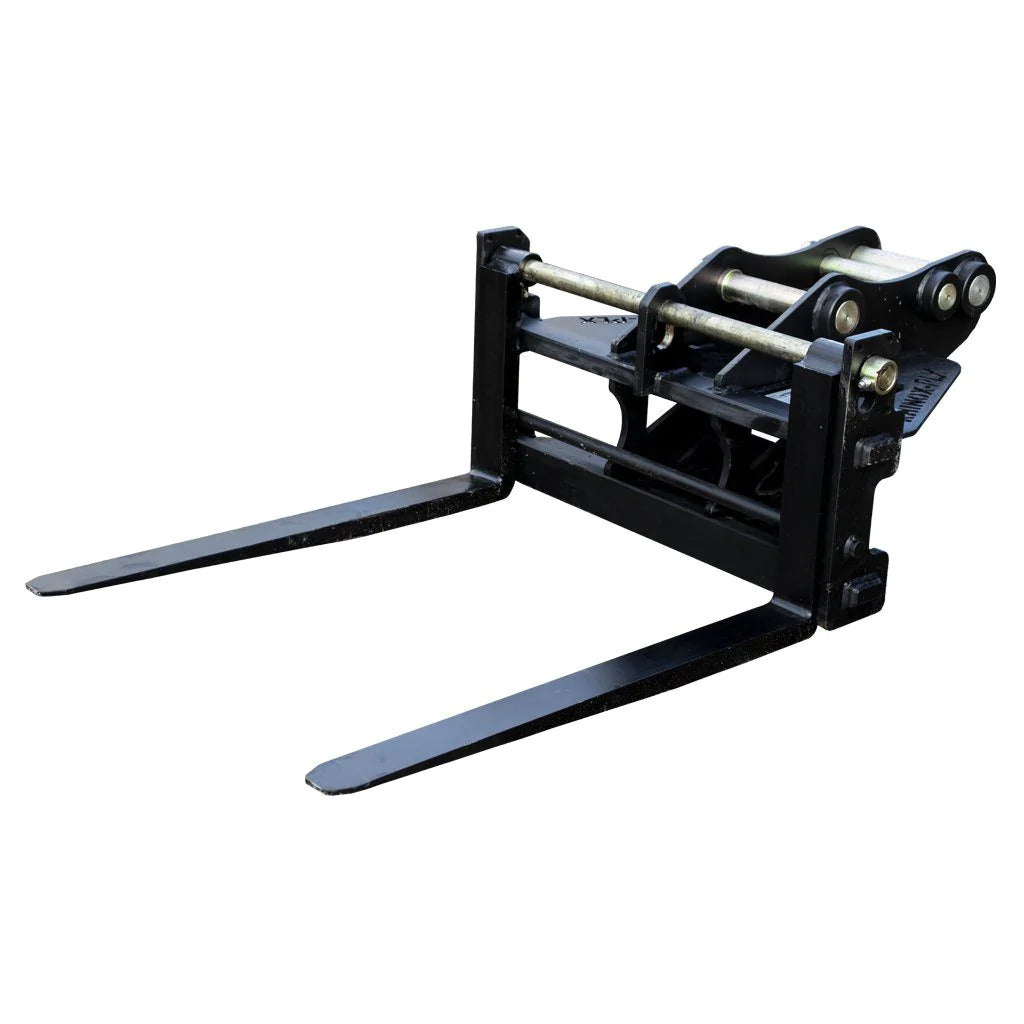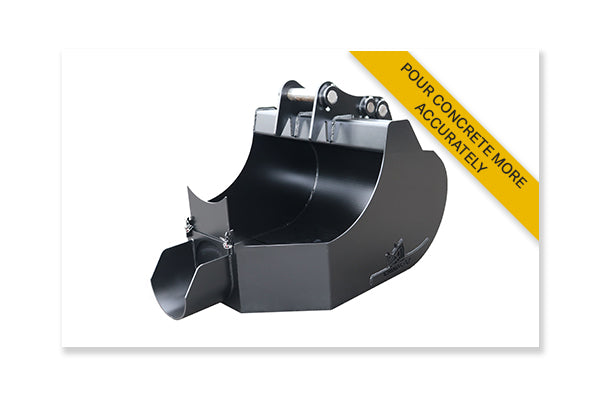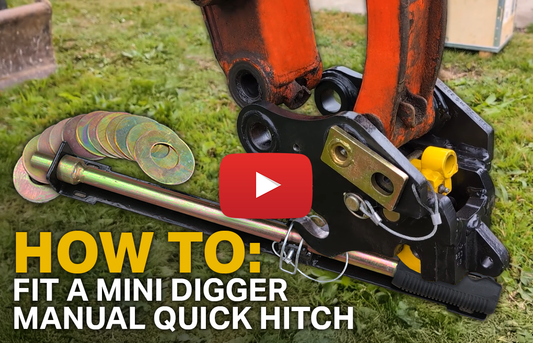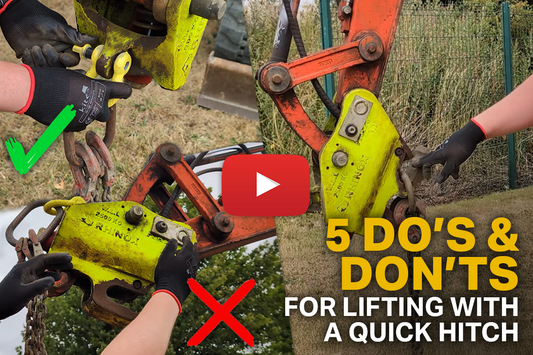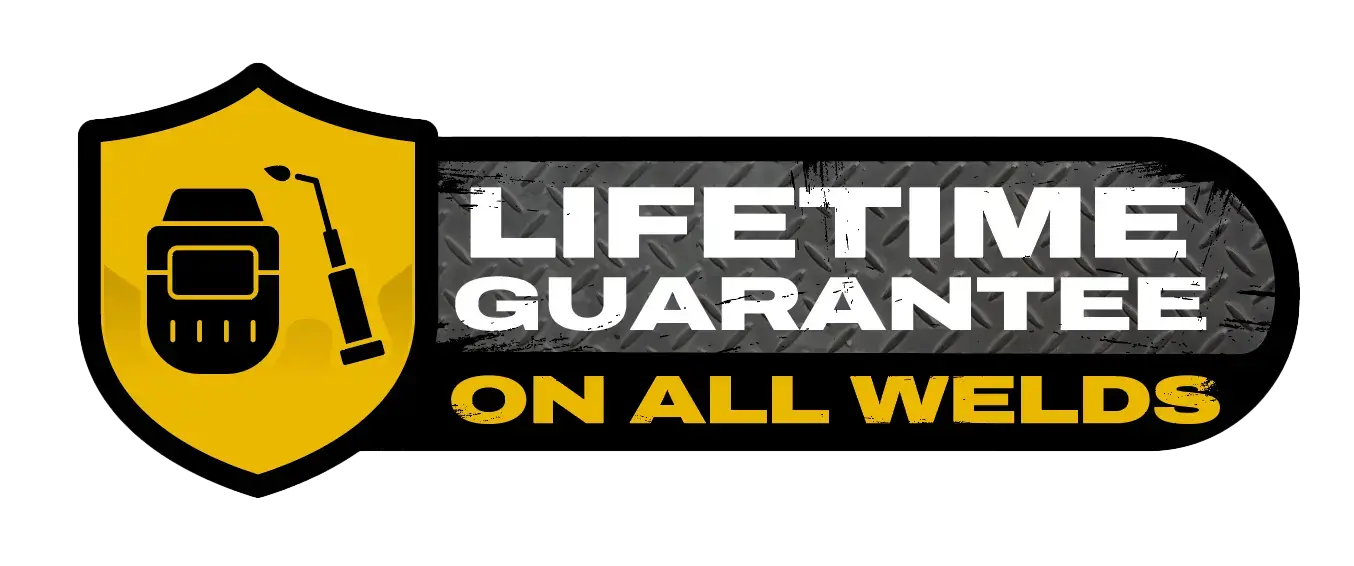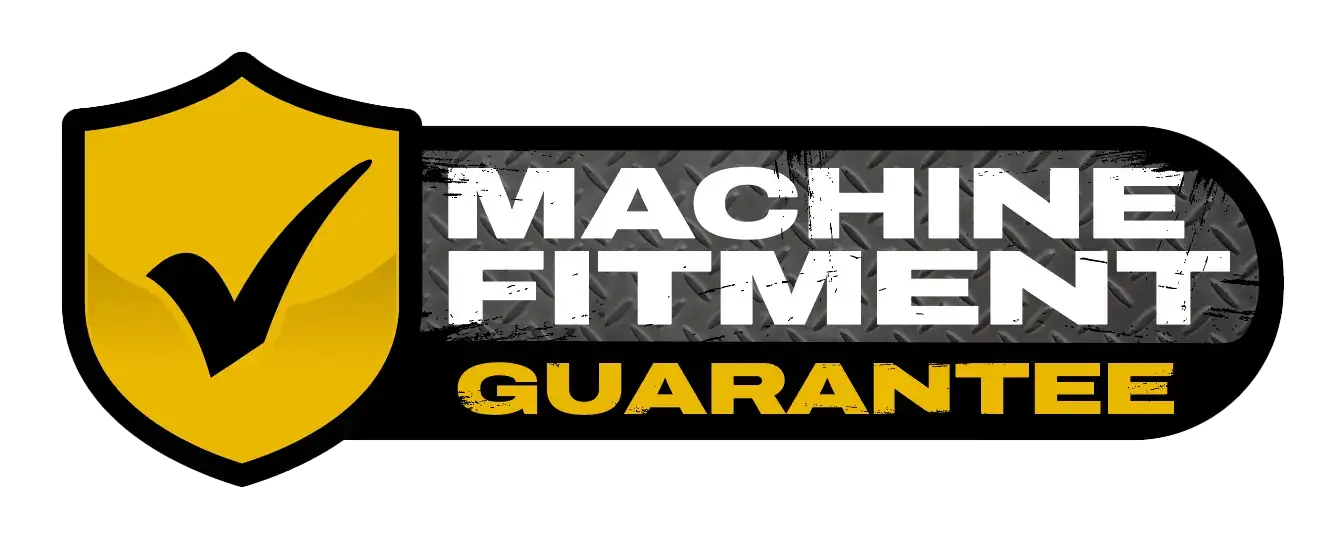
Top 5 Most Interesting Excavator Attachments
In 2023, the variety of excavator / digger attachments on the market are astounding! Your excavator is no longer just a machine that is used for digging. They can do anything from pouring concrete, moving pallets of material, cutting down trees, demolition, tree stump removal and many, many more. So, the Rhinox Team have put together a list of what we think are the Top 5 Most Interesting Excavator / Digger Attachments. Going over what they are and how we think they could benefit you and make your machine much more versatile. Continue reading to find out more.
1. Asphalt Cutter
Our first attachment is the Asphalt Cutter, or Pizza Wheel as it's sometimes referred to. This attachment does away with the loud, traditional power saw, leading to minimum disturbance in built up areas. Instead, you can connect this attachment to your digger arm and use the power of your machine to cut through your asphalt, tarmac, turf or similar. It is ideal when you need a precise cut as you can place your attachment in line with where you want it and then track forwards with your excavator. Your excavator will not waver from its position unless you adjust it with your pedals or sticks, meaning that the line will be much more accurate then if you were to cut it by hand or even try to draw out a guide line.
The Cutter featured in the right picture above is a JB Equipment Asphalt Cutter. They manufactured their wheel to a cutting depth of 165mm which means you can cut to 16.5 cm or 6.5 inches below the surface level, making it easier for you to mark out any design work in lawns or installation lines for pipework or cables. When cutting through expensive materials like asphalt or tarmac, the Cutter can reduce the amount you will need to discard and then replace once you have completed your jobs.
2. Flail or Mulcher
The next interesting excavator attachment is a Flail or Mulcher, they can also be referred to as Flail Mulchers and Hammer Mulchers, or Flailing Heads and Mulching Heads. The ones pictured are manufactured by Digbits. A Flail and Mulcher are similar looking attachments, that carry out similar jobs but perform very differently! In basic terms, these attachments are designed to cut through materials, chopping or tearing it into pieces, usually to be removed, reused and recycled.
A Flail is used to cut through grass and shrubs, some would say it's like an industrial mower. Flails are usually manufactured with sharp blades of metal that attach to a rotating barrel. As the barrel spins the blades slice through grass, branches and overgrowth. Sometimes the blades of a Flail aren't fixed to the barrel but are attached like a key is to a keyring. This means that if it hits something too thick or durable while in use, they can move out of the way, protecting the blades from damage.
A Mulcher is a more heavy-duty version of the Flail. It is designed with fixed, hardened teeth, usually referred to as Hammer Blades, to chew through tougher materials like small trees, tree stumps or tough roots. The teeth spin round on a barrel meaning that they continually penetrate the material, in quick succession, to tear through it with easy.
These are attachments are a great way to maximise your excavator and help maintain or remove any large areas of growth or build up. They also allow you to break down the materials into much smaller pieces which can be reused for drainage, composting or taken to be recycled in a larger format.
3. Concrete Crusher
An attachment that you may never have consider to be an attachment is a Concrete Crusher. But what does it do? The clue is in the name...it crushes concrete. Essentially, this attachment works like a giant pair of teeth, breaking up large pieces of concrete into much smaller pieces.
These type of attachments are usually used on demolition or construction sites to break up any old material, to be able to dispose of it easier or to reuse it for other projects, such as: driveways, paths, drainage, raised garden beds or building retaining walls for erosion. This is a great way to save you money on recycling or muckaway costs but it also saves you money on having to repurchase similar material to carry out projects further down the line.
The Concrete Crusher pictured above, is manufactured by Geith. Geith Concrete Crushers are manufactured with shear blades which means you can also cut through rebar. You will usually find rebar within large amounts of concrete as they are used to reinforce concrete structures to strengthen when under tension.
4. Screening Bucket
This next attachment looks like something you should find at a funfair or amusement park. The Screening Bucket is a basically a rotating chamber made with holes of varying diameters, that sort finer materials from larger materials. This attachment is based off of the concept of a Riddle Bucket / Shaker Bucket, which is a very popular attachment for excavators / diggers, apart from it avoids the need to vigorously shake your attachment up and down (which can cause wear or damage to your machine if done too regularly).
The Screening Bucket is becoming increasingly popular in the UK for individuals and companies wanting to refrain from using the shaking motion on their excavator. As previously mentioned, the chamber of the Screening Bucket rapidly spins to sift out the finer materials like topsoil and peat, from larger materials like rubble, bricks and rubbish that has become mixed up in the ground. This allows you to recycled and repurpose any materials that you have sorted, saving costs across the board.
|
The attachment pictured is the Bucket Warehouse Screening Bucket which is manufactured with a 360 degree, protective frame to prevent excess strain on the chamber when crowding the attachment in and out from the digger. As well as, a tapered chamber to increase the capacity when screening large materials. |
5. Clay Spade
The final excavator attachment on the list is the Clay Spade. This attachment has been specifically designed for digging in wet or sticky material such as clay or mud. You may be wondering why this bucket has no sides? Won't the material fall out? Well, yes, it will but that is the aim. When digging in thick, sticky materials it is very easy for your standard digging bucket to get clogged up, making it a nightmare for you to quickly and easily dig. You will have to continuously get out of the excavator to dig out the material that is stuck in your bucket - a very messy and annoying job to have to do. The Clay Spade was designed without the bucket sides so that the material cannot get wedge in, making it easier to dislodge the material you're scooping out from withinside the cab of the excavator.
The Clay Spade pictured is our own version of this attachment. We have manufactured this spade with thicker and stronger side plates to maintain the strength and durability of the attachment while pulling material through the ground. Sometimes you will see the Clay Spade made with teeth, we don't manufacture ours in this way as the teeth can get stuck within the sticky material, making it more difficult to complete your job. The Rhinox Clay Spade has a bladed edge so that you can shave away at the material you are digging, with a significantly less chance of it getting stuck in the ground.
So, there you have it. The Top 5 Most Interesting Excavator Attachments that we believe you needed to know about. If you want to explore some similar content, click the links below to find out more.
 |
 |
 |

